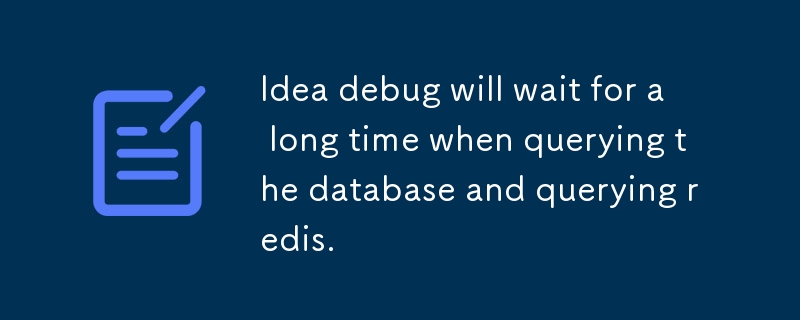This article discusses optimizing database and Redis query performance by adjusting configuration settings and identifying and addressing bottlenecks. It covers topics such as query timeout, database pool size, Redis connection timeout, eviction poli

What configuration settings can I adjust to optimize database and Redis query performance?
Optimizing database and Redis query performance involves adjusting various configuration settings. Here are key settings to consider:
-
Database Query Timeout: Adjust the query timeout to control how long a database query can run before terminating. A longer timeout can prevent performance issues caused by slow queries, while a shorter timeout can mitigate the impact of runaway queries.
-
Database Pool Size: Configure the database pool size to manage the number of concurrent connections to the database. A larger pool size can handle more concurrent queries, but it can also consume more system resources. Determine the optimal pool size based on workload and hardware capacity.
-
Redis Connection Timeout: Similar to database query timeout, adjust the Redis connection timeout to set the maximum time a client can wait for a connection to establish. Optimize this setting to balance query speed and connection stability.
-
Redis Max Connections: Set a limit on the maximum number of concurrent connections allowed to the Redis server. This setting helps prevent system overload due to excessive connections.
-
Redis Eviction Policy: Configure the Redis eviction policy to determine how Redis handles data when the memory limit is reached. Choosing the right policy, such as LRU (Least Recently Used) or LFU (Least Frequently Used), ensures efficient data management and query performance.
How can I identify and address bottlenecks in my database and Redis queries?
Identifying and addressing bottlenecks in database and Redis queries involves the following steps:
1. Query Profiling: Use profiling tools provided by the database and Redis to identify slow or inefficient queries. Analyze query execution plans, explain plans, and slow query logs to pinpoint performance issues.
2. Index Optimization: Ensure that appropriate indexes are created on database tables to optimize query execution. Improper indexing or missing indexes can lead to slow queries and poor performance.
3. Query Optimization: Rewrite or refactor database and Redis queries to improve performance. Avoid using inefficient constructs, such as nested queries or excessive joins. Consider using prepared statements to reduce overhead and improve query execution speed.
4. Hardware Optimization: Evaluate if hardware resources, such as CPU, memory, or storage, are sufficient to handle the query load. Consider upgrading or scaling the infrastructure if hardware limitations are a contributing factor to bottlenecks.
Does IntelliJ IDEA provide any tools or debugging features specifically tailored for optimizing database and Redis queries?
IntelliJ IDEA offers several tools and debugging features designed to improve database and Redis query performance:
-
Database Profiler: The Database Profiler tool enables detailed analysis of database query execution. It provides performance metrics, such as query execution time, database calls, and resource consumption, helping developers identify and resolve performance issues.
-
Redis Explorer: The Redis Explorer provides a graphical interface for interacting with Redis. It allows for real-time monitoring, key exploration, and data manipulation. The Explorer can be used to identify performance issues, such as slow commands or memory usage, and to perform debugging tasks.
-
SQL Editor: The SQL Editor offers syntax highlighting, code completion, and error checking for SQL queries. It also provides features such as query formatting, query history, and execution statistics, simplifying the development and optimization of database queries.
-
Redis Debugger: The Redis Debugger allows developers to step through Redis commands, inspect values, and analyze the execution flow. It facilitates debugging of complex Redis scripts and identifying performance bottlenecks.
The above is the detailed content of Idea debug will wait for a long time when querying the database and querying redis.. For more information, please follow other related articles on the PHP Chinese website!






